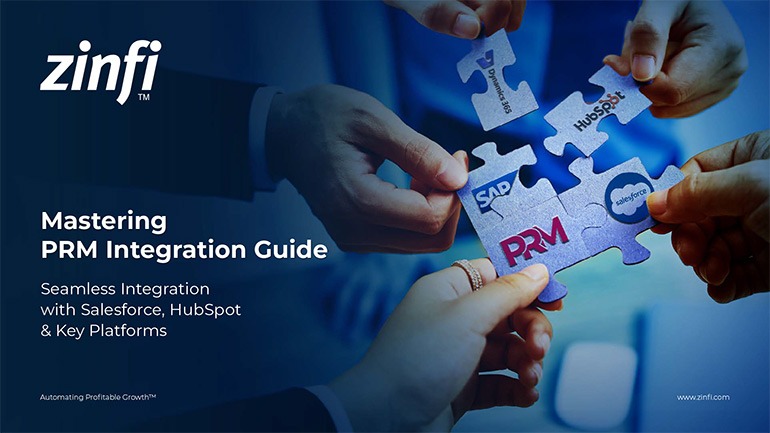Glossary - How to - Partner Management Strategy
How to Implement an Effective Partner Management Strategy?
Introduction
Partner management establishes, maintains, and optimizes relationships with business partners to drive mutual success. It plays a crucial role in Partner Relationship Management (PRM) by ensuring seamless collaboration between organizations and their partners, including distributors, resellers, affiliates, and service providers.
An effective partner management strategy helps companies increase market reach, improve sales performance, and foster long-term partnerships. With the right approach, businesses can leverage their partner ecosystem to gain a competitive advantage. In the digital age, automated partner management solutions streamline workflows, enhance communication, and provide valuable analytics for performance tracking.
Key Takeaways:
Establish Clear Partner Objectives:
Setting clear objectives is the foundation of a successful partner management strategy. Organizations should define:
- The desired outcomes of the partnership (e.g., revenue growth, market expansion, or brand awareness).
- Performance metrics and KPIs to measure success.
- The level of engagement and support required from both parties.
Aligning goals with partners ensures that all stakeholders work towards a common objective, minimizing conflicts and maximizing efficiency.
Implement a Robust Partner Onboarding Process:
A seamless onboarding process sets the stage for a productive partnership, including:
- Providing comprehensive training materials and certification programs.
- Establishing clear communication channels for ongoing support.
- Using automation tools to simplify document sharing, compliance tracking, and performance monitoring.
A structured onboarding process accelerates time-to-value and helps partners become productive faster.
Foster Strong Partner Relationships:
Building strong relationships with partners involves:
- Regular check-ins and feedback loops to address concerns.
- Providing incentives, rewards, and co-marketing opportunities.
- Offering exclusive deals or priority access to new products and services.
Investing in relationship-building fosters loyalty, engagement, and long-term collaboration.
Leverage Technology for Partner Management:
PRM software enables businesses to:
- Automate partner communication and reporting.
- Streamline deal registration, lead management, and commission tracking.
- Provide a centralized portal for training, marketing resources, and data analytics.
Adopting a digital-first approach improves efficiency and enhances partner experiences.
Continuously Optimize Partner Performance:
Regularly reviewing partner performance ensures continuous improvement. Businesses should:
- Analyze sales data and partner contributions to assess effectiveness.
- Identify areas for improvement and provide tailored training.
- Adjust partnership strategies based on data-driven insights.
Optimizing performance keeps partnerships dynamic, scalable, and results-driven.
Summary of Key Takeaways:
A structured partner management strategy ensures alignment, efficiency, and growth. Some essential elements are clear objectives, seamless onboarding, strong relationships, technology adoption, and performance optimization. Leveraging automation tools enhances scalability and profitability while maintaining high partner engagement.
Key Examples:
- Automotive Manufacturing: Car manufacturers rely on a network of distributors and dealers to reach customers. Partner management solutions help optimize inventory allocation, streamline service agreements, and enhance collaboration.
- Consumer Electronics: Electronics brands work with resellers and retailers to expand their market presence. PRM software enables seamless product launches, co-branded marketing campaigns, and real-time sales tracking.
- Energy Production: Energy companies collaborate with contractors, suppliers, and distributors. Partner management ensures compliance with regulations, tracks project milestones, and streamlines communication.
- Financial Services: Banks and insurance providers partner with agents, brokers, and fintech firms. PRM platforms facilitate lead sharing, commission tracking, and regulatory compliance.
- Food and Beverage: Restaurants and manufacturers partner with suppliers, franchises, and distributors. Automated partner management simplifies order tracking, quality assurance, and supply chain logistics.
- Healthcare Services: Hospitals and healthcare organizations work with medical suppliers, insurers, and service providers. Partner management solutions ensure secure data exchange, vendor compliance, and operational efficiency.
- Information Technology: IT companies partner with managed service providers, software resellers, and cloud providers. PRM tools enable deal registration, revenue sharing, and training certification tracking.
- Pharmaceutical Development: Pharmaceutical companies collaborate with research institutions, healthcare providers, and distributors. Partner management ensures compliance, clinical trial coordination, and streamlined product distribution.
- Retail Industry: Retailers work with suppliers, logistics providers, and online marketplaces. PRM software helps track sales performance, manage vendor contracts, and optimize supply chain operations.
- Telecommunications: Telecom providers partner with resellers, infrastructure vendors, and service integrators. Effective partner management enhances network expansion, revenue-sharing models, and customer support services.
Conclusion:
Implementing an effective partner management strategy is essential for business growth and sustainability. By setting clear objectives, optimizing onboarding, fostering relationships, leveraging technology, and continuously refining performance, companies can maximize the value of their partner ecosystems. Automated PRM solutions are vital in streamlining operations, enhancing collaboration, and driving success across various industries.
By following these best practices, organizations can create a high-performing partner network that drives revenue, efficiency, and long-term success.
Associated Keywords:















